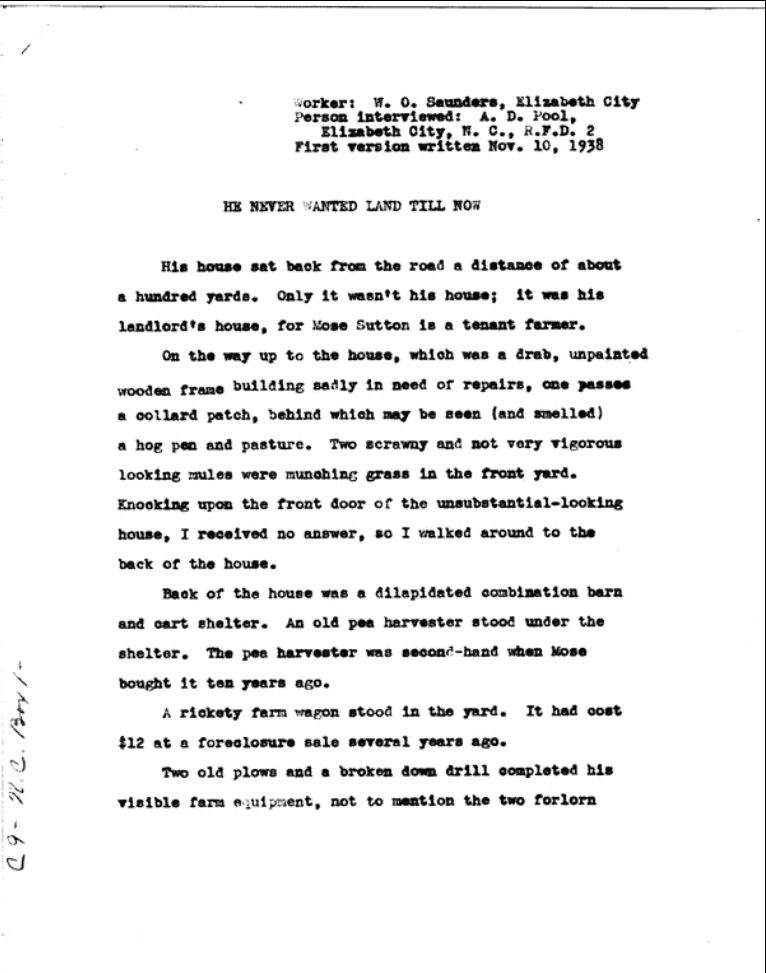He Never Wanted Land Until Now
Download original interview transcript
Click here to download the full interview transcript in PDF format

An interview with A. D. Pool, conducted by W. O. Saunders. The narrative tells the story of ‘Mose Sutton, an elderly tenant farmer in North Carolina.
Excerpts
Worker: W. O. Saunders, Elizabeth City
Person interviewed: A. D. Pool,
Elizabeth City, N. C. R.F.D. 2
First version written Nov. 10, 1938
HE NEVER WANTED LAND TILL NOW
His house sat back from the road a distance of about a hundred yards. Only it wasn’t his house; it was his landlord’s house, for Mose Sutton is a tenant farmer.
On the way up to the house, which was a drab, unpainted wooden frame building sadly in need of repairs, one passes a collard patch, behind which may be seen (and smelled) a hog pen and pasture. Two scrawny and not very vigorous looking mules were munching grass in the front yard. Knocking upon the front door of the unsubstantial-looking house, I resolved no answer, so I walked around to the back of the house.
Back of the house was a dilapidated combination barn and cart shelter. An old pea harvester stood under the shelter. The pea harvester was second-hand when Moss bought it ten years ago.
A rickety farm wagon stood in the yard. It had cost $12 at a foreclosure sale several years ago.
Two old plows and a broken down drill completed his visible farm equipment, not to mention the two forlorn looking mules that looked their abject shame of ancestry and despair of posterity.
Moss and his wife and two youngsters were busily engaged in going through a poor stand of cotton, plucking the white fiber from the scattered bolls and depositing it, with an automatic-like movement born of long practice, into sacks which were tied around their waists.
There was something about Mose’s appearance that reminded me of the two mules I had observed in the yard— something that suggested too much hard work in the fields and too little to eat at times. He seemed glad of the chance to stop picking cotton and talk to me.
With a little prodding and prompting, Mose told me how the Southern tenant farmer or sharecropper about whom the Administration evinced so much concern in 1938 lives and what he lacks.
“What is your average annual income, Mose?” I asked. “That is, how much money do you make off your farm in a normal year?”
“Nothin’, or almos’ nothin’,” he replied. “If I have enough left over, after payin’ for my go-ano and such, to buy flour an’ meal and rise through de winter, den I calls myself lucky. I ain’t made no money farming in ten or fifteen years.
“De landlord, he gets a fourth of de peas (soy beans)
Questions:
When was this written?
What was happening in the United States at this time?
What about life in this primary source is very different from today? What is similar?
Why does the author spend so much time in describing Mose and the farm?
How has tenant farming affected Mose’s life?
How might his life have turned out differently if he had a different job?